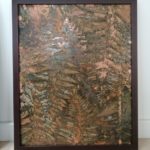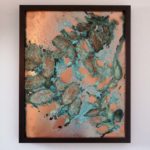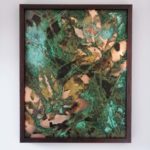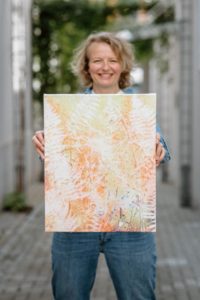Kathrin May
Works
Bio
Kathrin May’s works address the deep connection between human beings and nature. During her search for an expression that is as unadulterated as possible, she has found a distinctive language that connects the phenomena of nature with her emotional world.
The artist collects what the season has in store for her in the surrounding nature. For example, these can be branches, leaves, wild herbs, blossoms, and roots. She puts these together on her canvas to create completely new visual compositions. The play of colour creates light-filled plant-like silhouettes embedded within the contrast of multi-layered colour gradients as the background. Here, light meets darkness, stillness meets movement, and a crystalline dynamic spatiality emerges that repeatedly condenses and dissolves.
Kathrin May’s works evoke sensual perception and deep feelings. Her works tell of the happiness of being in nature, of lightness and joie de vivre and the beauty of the moment.
Kathrin May is a freelance artist who lives and works in Hamelin, Germany. She studied at the Kunsthochschule Berlin-Weißensee and at the École Nationale Supérieure des Arts Décoratifs in Paris, graduating as a master student. Her works are shown in national and international galleries and art institutions. In addition to exhibitions in Bonn, Düsseldorf and Madrid, she is now exhibiting her works for the first time in her hometown of Hamelin.
Copper Patina
The copper plates are covered with plants and then repeatedly sprayed with various mineral-based solutions, vinegar and water until the copper oxidizes and the patina has developed. This results in multi-layered superimpositions, color gradients and imprints of leaves and flowers in different degrees of abstraction. The panels are finally sealed with a special varnish.
Cyanotype
The cyanotype is a photographic experiment. It makes it possible to “draw” directly with plant material. A light-sensitive, iron-containing solution is applied to the canvas and dried in the dark. The artist then covers the canvas with materials collected from nature. After exposure to sunlight, these are removed and the canvas is washed out. The chemical process creates the typical blue coloration in the areas that were exposed. The unexposed areas remain white or gray.





